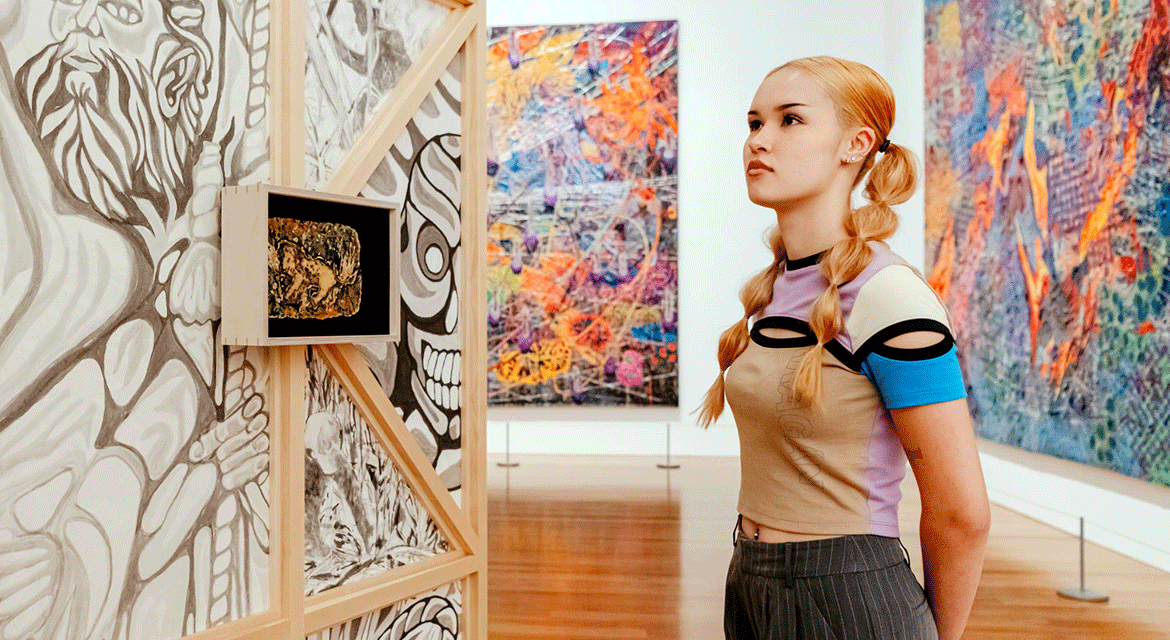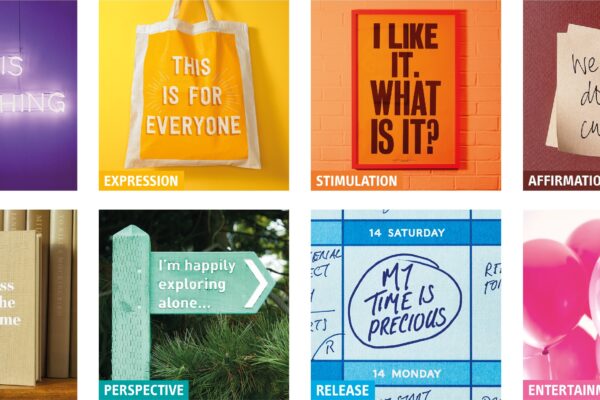- What We Do
- Understanding your audience
- Engaging new audiences
- Designing experiences
- Building loyalty
 Case studies
Case studiesQAGOMA: Reactivating younger visitors through segment insight, programming and a targeted social media campaign
In 2020/21, Queensland Art Gallery | Gallery of Modern Art’s Visitor 360˚ research revealed a third year of proportional and real-term decline of younger adults (18–24-year-olds). While the decline could partly be attributed to the absence of overseas visitors, who are typically younger, the decline began pre-pandemic. QAGOMA asked MHM for insights to help them proactively reverse the decline.
Bespoke methodology to meet a complex research challenge
Identified as an area of focus going into the 2021/22 year, MHM delivered a bespoke workshop focusing on younger adults. The workshop utilised insight from nearly a decade of Visitor 360˚ research, deep-diving into this cohort’s motivations for visiting QAGOMA and delving into initiatives other cultural organisations had implemented to grow this audience.
Achieving demographic goals is important; activating harder-to-reach groups can demonstrate an organisation is serving its community well. However, thinking about the audience in purely demographic terms isn’t often helpful; youth aren’t a homogenous group. Some things can distinguish this cohort, their expectations of experiences, the places they encounter information and how they want it delivered, but the underlying benefits sought from cultural engagement span age bands. It’s the way these are realised, which sometimes looks different. Therefore, MHM’s own segmentation framework – Culture Segments – needed to be in the audience development mix.
While not defined by demographics, there are demographic skews amongst Culture Segment clusters, with Stimulation typically skewing younger. Stimulation also tends to be more highly concentrated in culturally vibrant urban areas and Stimulation, as is often typical in younger adults, want a good time, but with substance to the content they engage with, ideally, with a political or ethical dimension. These don’t have to be front and centre, but they like institutions that stand (up) for something.
Implementing Culture Segment insights to turn around decline
For QAGOMA, adding a focus on Stimulation to support achievement of their demographic goals was an obvious move. Armed with a strategic vision, knowledge of segmentation and their own audience through Visitor 360˚, QAGOMA saw the potential to reverse the younger adult decline through its flagship event, The 10th Asia Pacific Triennial of Contemporary Art (APT10).
APT10’s marketing and communications strategy harnessed Culture Segment knowledge with a strong digital component targeting youth segments through paid Instagram, YouTube and Facebook advertising and leveraging digital content across QAGOMA’s own channels to reinforce the appeal, including a TikTok channel launched to coincide with the APT10 opening.
This communications strategy, coupled with a strategically developed public program, bore fruit for QAGOMA, and both galleries (QAG and GOMA) experienced real growth in the numbers of 18–24s and 25–39s visiting during 2021/22.
Header image with kind permission of QAGOMA: Amy Lien and Enzo Camacho, The Angry Christ (Plot and Plantation), 2021 (installation view). The 10th Asia Pacific Triennial of Contemporary Art (APT10), Photograph: J. Ruckli © QAGOMA.
Related content you may like
 Learn more
Learn moreIntroducing Culture Segments
A great way to jump start your journey or refresh your Culture Segments knowledge, this session will introduce the ins and outs of each segment and how to apply these insights to your organisation.
Learn moreState Library Victoria Visitor 360°
How MHM has worked with State Library Victoria to better understand its audience through Visitor 360° research, helping the Library develop a deep understanding of its visitors, and allowing it to tailor the services and activities it provides accordingly.
 Learn more
Learn moreAudience profiling
Get reliable data about who’s visiting, what they did, and how they felt about their visit.
- Engaging new audiences
- Understanding your audience
